Start onions from seeds to get the biggest bulbs. How to grow lots of big onions from seed to harvest and then cure and store your onions.

This post contains affiliate links, which means I make a small commission at no extra cost to you if you click through and make a purchase. See my full disclosure here.
Starting onions from seeds, along with most of your vegetables, is the most budget friendly way to grow your garden. And it’s the most rewarding! There is no greater garden joy than to see your plant babies get born. It’s exciting to see the little sprouts emerging in those seed trays, and each one will mature into a beautiful onion just a few months down the road.
It’s also really nice to have some fresh green plants growing inside when it’s still wintery out – it gives me a feeling of impending joy with a promise of spring! If you want to skip my very long, but thorough tutorial to start onions from seeds below, you can jump straight to the quick-start summary below.
So let’s dive right in and start onions from seeds!
Grow Your Own Onions!

There are many good reasons to grow your own onions. And many to start onions from seeds. But no matter how you want to start them, whether from sets or store bought starts.
Onions are heavy feeders. If you grow your own, you can take advantage of that and feed lots of nutrition without the chemicals and artificial fertilizers. These naturally grown onions will later feed you and your family with nutrient dense and clean food.
Growing your own food can assure that it is free from chemical fertilizer soaks, nutritionally deficient, depleted soil, and it is free from pesticides and other toxic additives if you choose to garden using clean and organic methods.
And I think that is one of the biggest reasons to grow your own food in the first place. And while there is much more to talk about along that line I’ll leave that for another day and conclude here that growing your own onions is just plain exciting and rewarding!
Starting Onions From Seeds Is My Favorite Way To Grow Onions

Many people buy onion sets to grow their onions, and I sure understand why. They are so easy to just stick in the ground as soon as you bring them home. However, it is not necessarily the best option. Onion sets are immature onions that were grown the year before and were harvested when still small to be replanted in spring.
The potential trouble with onion sets
The trouble is that these sets might bolt before they grow into bulbs, especially if they were harvested too late by the grower. This is after all their second year of growth and, onions being biennial, that’s the innate signal they are programmed for, that tells them to go to seed.
So if you do plant sets, be sure to plant the smallest ones you can find to get bigger onions and for less chance of them bolting. And, in general, sets do not grow the biggest onions.
Another disadvantage of onion sets is the fact that there are only a few varieties to choose from. So if you have your mind set on a fancy unconventional variety of onion, you are likely out of luck.
Take for example one of my absolute, all-time favorites, the Italian heirloom torpedo onion, Tropea lunga (or la regina rossa, the red queen). It is highly unlikely that you’ll find sets to grow this one. But you can easily start this onion from seeds!

The Potential Trouble With Store-bought Starts
The same is true for store-bought onion plant starts. There are usually limited varieties available. And personally, in the past when I tried to grow them, I never had good luck with store bought starts.
I think the reason is that they are doused in a fertilizer brew when they are grown at big nurseries and come to depend on this rich chemical based treatment. So when I plant them in my garden they wither away when faced with the shocking circumstance of a real world environment.
So in my humble opinion, the best onions are started from seed and grown at home. And this is what we’ll focus on today.
When To Start Onions From Seeds
Onions need to be started about 8-12 weeks before the last frost date for your area. They need a long growing season and like it fairly cold when they first start growing. They are frost hardy and won’t do well if planted once it starts to get too warm in the spring.
So use your frost date and work your way backwards to find your seed starting date. For me the last frost date is April 11. So my onion starting date is about January 11 to February 11. I like to start onions about 10 weeks before, which would be right around January 25.
Here is a cool calculator for your seed starting dates that was created by Brian Lowell.
Use this tool to find your average last frost date and then plug that into the calculator above. Now you’ll have your ideal seed starting or planting dates for your growing zone.
Once you have your onions growing, those onion starts can be planted out into the garden about 3-4 weeks before that last frost date. Wait for the temperature to start getting a little warm during the day, but it can still be around freezing at night. And, of course, your ground should not be frozen anymore.
How To Choose Your Onion Variety

If you have looked at seed catalogs, no doubt you’ll have found a huge selection of onions, with all sorts of attributes. Long day, short-day, bunching onions, storage onions, sweet, red, yellow, Spanish, and so on.
This might make it a bit hard to choose the right ones for your garden and for your use. To me it was really confusing in the beginning. I recommend you check out my onion varieties primer for selecting onions that will work for you.
Here are the two most important things to pay attention to when you go to select seeds and before you order.
Consider The Right Day Length:
Onion bulbing is triggered by day length. In the North your days are longer in the summer than in the South. Onions are sensitive to that and bulbing for the different varieties is directly related to day-length.
Based on the area you live in, you’ll need to choose from either long-day, short-day or day-neutral (intermediate day) onion varieties. It is really helpful when seed companies list the latitude adaption of their varieties. Johnny’s is really good about that and several others are too. But for the rest we’ll just have to hope we can apply the following rule:
If you live in areas North of latitudes 35˚- 37˚N you’ll want to choose long-day varieties. South of this line, choose a short-day variety. If you live in one of the states that border this line on either side, you can use any variety, though short-day onions need a zone 7 or higher for fall planting.
Intermediate-day or day-neutral onion varieties will work just about anywhere except in the far south or the far north.
In the South at zone 7 and above, onions are planted in the fall while it is still warm out for about 4-6 weeks to get the onions established. Short day onions can work in the North too, but they would be planted in spring and they won’t yield big bulbs at all. You might be very disappointed planting these in the North except if you desire to grow pearl onions.
Consider The Culinary Uses:

Now you’ll be choosing whether you want Storage onions or the milder sweet varieties that don’t store well, but make killer fried onion rings. Or are you looking to grow leeks or green bunching onions? Perennial onions?
The more pungent, the longer they store. A higher sulfur content in the onions is what makes them pungent and gives them a longer shelf life.
Sweet onions generally are juicier and milder and so they will store for just a few weeks to a few months. Those are the ones you use for fried onion rings and burger toppings.
Storage onions on the other hand are very hard, tightly wrapped and are going to make you cry when you cut them up. The harder you cry, the longer they will store.
My strategy is this:
- I plant a bunch of fast growing green onions to get some onions in my food quickly. And if you cut them above the base instead of pulling them, they’ll keep regrowing greens all season long and even into the winter if it’s not too cold.
- Then I grow bulbing onions, and about half of them will be sweet onion varieties. I’ll use the sweet onions first during the fall and early winter and if I don’t use them all, I ferment them for fresh use or chop and freeze them for cooking. They can also be dried for onion powder.
- The other half of bulbing onions I plant for storage. After harvesting and curing them, I store them away till I run out of the sweet onions. They will get me through the winter until the green onions are growing and ready to eat and so the cycle continues.
- Besides bulbing and green onions I also grow garlic, winter-hardy leeks, shallots and perennial walking onions. This strategy assures that I have alliums available year round.
Start Your Shallots And Leeks Too
While you’re planting onions, you can also start shallots and leeks, which have the same requirements, conditions and procedure, so go right ahead and plant them the same as the onions in a few extra containers. I won’t post specifics on these today, but go ahead and get them started and watch for more about growing leeks in future posts.
Use Fresh Seed
Onion seeds do not store well, and unless you store yours in the freezer, they won’t germinate so well once they are more than a year old, if they germinate at all. This is true for leeks and shallots and all allium seeds.
I used to try planting old seed so it wouldn’t go to waste, but I always regretted it when I had just 2 or 3 little plants show up out of the dozens of seeds I planted and the few that germinated didn’t thrive. So take that from one who didn’t want to listen but has changed her mind.
Tip for old seed: If you have a lot of left-over seed and you don’t want to waste it, one thing you can do is pre-sprout or ‘chit’ your seeds. Place them between two damp papertowels and slip these into a gallon plastic bag. Keep an eye on them and if any show little white tails, they are viable and you can plant them with the white tail pointing down.
Preparing Your Seed Pots
Now that you’ve picked your onion varieties, ordered your seed and received them, it’s time to start growing. I have used the deep 18 ounce soda cups for their depth, to encourage long deep roots in the onions rather than a messy tangle in a small, shallow container. But I don’t like how much they want to tip over. So I prefer either the tall square 3″ pots or 6 packs. But the soda cups work well enough if you don’t have any other ones available.

You can use any pot though. I used to sow the seeds into flats a few times or into the standard plastic 4-packs or pint size planting pots. They all work. Soil blocks are another option, and you can also use toilet paper rolls, or other homemade planters.
If you want to use the cups, they need to be prepared by either poking holes into it with a hot nail or I just like to take scissors and cut 3 little spots on the corners where the walls meet the bottoms of the cups.

Fill The Planting Containers With Soil
Now you’ll need to fill them with a moist seed starting mix. It is best not to use just ordinary soil, since it often has fungi, possibly fungus gnats and other contaminants in it that can cause damping off disease or other problems with your tender young seedlings. It can also give you compaction problems.
If you do use soil, you can bake it in the oven to kill any pathogens. I have never done it, but a friend told me that it smells horrible. Maybe try it in the BBQ grill.
If you make your own potting soil and you use peat moss, baking is also advised, since peat often carries undesirables for planting indoors.
When you dampen the seed starting mix, try to get it thoroughly moist, but not wet. If you squeeze it it should release a few drops, not a stream of water.
Fill the cups to almost full, lightly bump the cups on the table so the soil mix settles and add a little more if necessary.
Plant Your Seeds
I don’t have much space here for too many seed trays, so I try to maximize each pot, if possible. My goal is to have about 150 onion plants for bulbs and a few for several bunching onion varieties. Plus I start some leeks and shallots as well. So I use about 15-20 cups to start all my allium seeds.
Sow about 10 – 20 seeds in each cup. Cover the seeds with a dusting of the soil (¼ inch). If you have access to vermiculite, you can use that instead of soil to cover the seeds. This can help reduce the chance for damping off.
Space saving tip: Group planting is another way to save space with onions. I haven’t done this in the past, but am trying it this year. Basically, you use smaller pots, plant 4 seeds in each and at transplanting time they don’t get separated, they get planted like bunching onions so they grow up together. This saves space in the garden too.
Label Them!
Label your cups either by writing directly on the cups or you can stick a popsicle stick in them with the variety written on it. I’ve also used an empty water or milk jug and cut strips from it that I used as plant labels.
Place the cups or pots into a dishpan or a waterproof planting tray and place them under grow lights. You don’t actually need the lights on until the seedlings start to emerge, but it’s good to be ready.
Keep The Onion Seeds Moist
Be sure to keep the surface moist by misting it with a spray bottle. Then lay a sheet of plastic wrap over the cups to keep it humid and to keep the soil from drying out. You could also use a large, clear plastic bag to put your whole tray in, just don’t seal it. Now you have a mini greenhouse. Onions will germinate in soil above 50 degrees and they don’t like it too warm, so there is no need for extra heat.
Once the green tips stick out of the soil, take the plastic off right away and start using the grow lights about 16 hours a day. The lights should be no more than 2 inches above the tips of the plants. Keep raising the lights as the plants grow.
My Own Germination Station Set-up

I live in a small yurt with little room, yet I could just barely fit a large 4ft long wire shelf with wheels in the middle of it that doubles as a storage area for seeds and planting tools, food storage, and more. The wheels make it easy to move when it’s in the way. This goes to prove that even if your challenged space wise, you can start seeds in your home, lol.
Lights

Then I mounted two 4-ft LED shop lights over each of the plant growing shelves and they fit perfectly across the length of each shelf. These lights are really great for starting plants, since they mimic daylight and have fairly high lumens for cheap lights, I recommend these over others that I have tried.
Of course you can get really fancy, expensive grow lights, but it is not necessary for starting seeds if you don’t plan to keep them inside in pots all year. Just get some lights that are over 2000 lumens and have a 5000 Kelvin temperature rating.
I also like these table mount grow lights that have a full spectrum light. But while this is great for growing houseplants, it is not necessary for seed starting. However, I do like the table mount option that could work well for many with limited space.
With my setup, I can fit 4 standard 10-20 trays with seedlings under one row of lights on each shelf.
Heat Pads
Then I have a couple of heating pads with thermostat on one of the shelves. This is for those seeds that like higher temperatures to germinate. But the onions don’t need the extra heat. However, I like having my operation set up for the season right from the start. And it is nice to have those heat pads all ready for the peppers and tomatoes which I’ll be starting in just another couple of weeks.
And here is some advice: I prefer having a thermostat for my heat pads. This keeps the electricity use way down, which is great if you’re off the grid, and they keep the seedlings from overheating. I highly recommend adding the thermostat!
Tip: When you’re not using them for planting, these heat pads can double as a yogurt or cheese making heat source. I have put them in a cooler and set my yogurt in there to culture. And they can help with brewing beer or fermenting things when it’s not warm enough in the house. Plus you can use it to get your bread dough to rise.
A Curtain Wrap
Finally, so my place doesn’t look like a hospital surgery room, I wrapped emergency blankets around the whole setup. This does actually a number of things: It magnifies the light inside, keeps drafts out, keeps the warmth and humidity higher inside, and keeps me from being blinded.
One blanket wraps all the way around the sides and back. Then I fastened it with document clamps from the stationary section at Walmart. Finally, I folded a second blanket in half for the front curtain. This I clipped on the second shelf from the top just above where the grow lights are. To access the plants, I just have to lift the blanket and stuff it into that top shelf where it stays till I take it back down. It’s quick and easy.
Onion Seedling Maintenance

Now you just need to keep the soil moist but don’t overwater. It helps to just put some water into the bottom tray and let the onions soak it up every few days. This prevents a wet soil surface and damp plants which could cause issues with disease. It’s best if the soil surface stays dry to prevent pest or fungus problems. The plants will send their roots down to where they can soak up the water and drink what they need to.
Fertilize with a light fish emulsion once a week after emergence. You’ll want to keep it well diluted, only use about half of what is recommended for garden beds.
If your onions grow too unruly and tall, they can be trimmed to about a 3 inch length, which also helps them grow stronger.
Hardening Off
Then about 4 weeks before your first frost date, start to harden off your onion plants. Take them outside to a spot that has dappled sun for an hour or so. Then take them back in and under the lights.
Next day repeat, but keep them out for a couple of hours with a bit of full sun exposure. On day three do the same, keep them out for several hours and allow them to get some full sun for an hour or two. Keep increasing the time each day for a week and let them have full sun for a whole day or two before transplanting.
If this doesn’t fit into your schedule, you can also set the tray out in the morning where it’s shady for most of the day and leave it there. They should get some sunshine, but not too much at first. Your goal here is to build up their hardiness to the elements.
Soak Your Onion Seedlings Before Transplanting

Here is a tip for transplanting success:
I give the onion seedlings a good soaking in a fish emulsion solution for an hour or so before I plant them. This way they can soak up some nutrients to make the transplanting easier on the young plants. It can also help reduce transplant shock. And it will also make the plants less susceptible to diseases. I just set the cups into a bucket or a deep dishpan with the solution right up to the rim of the planting containers.
As an extra help, I also use EM-1 or homemade LAB (lactic acid bacteria) in my fertilizer soak (watch how to make LAB from scratch here). If you have unsalted whey on hand, that can also help. Just add a little splash to the soaking water to inoculate the water and plant roots with the beneficial bacteria.
EM-1 is a concentrate of effective microorganisms that are supportive for plants and inoculate the soil with beneficial microbes and this can really boost your plant health. If you’re unfamiliar with this, I highly recommend that you check out the book Jadam, Natural Korean Farming, by Master Youngsang Cho. It’s a system of natural, organic farming practices. Highly recommended!
Transplanting Your Seedlings
You can now transplant your seedlings. Gently pull the individual plants out from the bunch. They usually separate pretty easily if you’re careful.
I don’t separate bunching onions individually. I just break the content of the planting container into 2-3 clumps with 4-6 plants in each. Then I plant them that way, all together in different places.
Spacing:
Most bulb onion plants and leeks should be spaced about 4 inches apart in your garden bed. If you’re planting one of the giant onion varieties such as Ailsa Craig Exhibition, Walla Walla, or Spanish Onions, I’d space them about 6 inches apart.
Planting Depth:
I use a dibber, hori hori knife or my cobra head cultivator to make a hole, place the plant in it and add some compost into the hole to backfill. Don’t plant them too deep. You’ll want all the roots in the ground, of course, and no more than ½ inch of the plant.
Onions will not want to form bulbs if they are compressed by the soil around them. It is helpful to remember that the bulbs are not roots, but part of the stem and so they like to be mostly ouside of the soil.
Side Dress With Compost
Side dress your onion plants with a layer of compost. Onions are heavy feeders and benefit much from fresh, rich organic matter. Here is how to make the best compost for your garden beds.
Water The Onions
It’s important to water your onions right after planting. This way their roots have water available right from the start to prevent extra stress. They can dry out quickly when their roots have not found their way around yet. I like to use my diluted onion soaking water for this which adds a little of that good fertilizer to the ground in the onion planting area.
Mulch
Mulching is super helpful when you are planting onions. Onions like to have a consistently moist soil at all times. A light layer of mulch will go a long way toward retaining moisture and preventing evaporation. It will help keep the weeds down and mulching will also keep the soil cooler in the heat of summer. Hay or straw works great for mulching onions.
Maintenance During The Growing Season

Now just keep an eye on the soil moisture! Stick your finger in the dirt and if it doesn’t feel moist an inch below the surface, give your onion plants a good soaking, preferably in the morning. Add some fish emulsion to the water every two to three weeks for extra nutrients before they start bulbing.
It is better to water deeply every few days rather than shallow every day. But Onions are shallow rooted, so don’t wait too long with watering.
Keep the weeds down as much as possible especially in the beginning, since Onions don’t like competition.
Once your onions start to bulb up, it helps to loosen and pull away the soil a little bit around your onion bulbs. This will give them room to expand.
With leeks you want to do the opposite. Pile soil or mulch up around the leeks as they grow, to get a nicely blanched stem.
What if your Onions are bolting before they make bulbs?
This can happen for various reasons, such as drought, large temperature swings, having planted onion sets instead of seeds and more. If your onions bolt, they won’t grow anymore. It’s best to cut the flower stalk before the flower opens up and use it for cooking. Use the rest of the onion soon, it won’t store long. For more information check out my post about garlic scapes and bolted onions and find tasty ways to use them, including a delicious pesto recipe.
Harvesting Onions

Technically, you can harvest onions at any stage, from green onions to small bulbs to mature big bulbs. But if you’re interested in storing them, you’ll want to wait till they are at the best stage for storage and here is how you figure that out:
If you look at the seed packet it likely has a ‘days to maturity’ stamp. This will give you an approximate harvest date from when you transplanted your onions into the garden.

But don’t rely on an exact date. Watch your plants. Harvest them when the tops are browning, have fallen over, and the stem is getting dry where it bent.
Pick the onions before the first frost and after several dry days for best storage quality.
Curing Onions

If the weather is dry and sunny, leave your onions right in the field for a day or two to dry. After that, gather them up and take them to a spot that is shady, dry and airy. A covered porch would be great or a garage.
If possible, dry them on racks. I’ve used the sides of my gorilla garden cart with removable sides propped up between chairs. I also used my compost sifting racks hung from rafters. If you have some scrap fencing, you can prop that up to hang your onions on it with the greens dangling down. And, of course, you can use one of those handy wire shelves that come in many sizes.
It takes about 4 weeks to fully cure and dry the onion skins. At this point you can cut off the roots and cut the stems back to about 2 inches. Leave the stems on, of course, if you’re planning to braid them.
Storing Your Onions

If any stems are still green after curing, use those onions first, they won’t store well.
Do not store onions together with potatoes, they will cause each other to over ripen. Store onions in burlap sacks, wooden crates or those mesh bags that you see in the stores. You can braid the onions or you can store them in old pantyhose. Add an onion, make a knot, add another and so on. Then hang it from the rafters.
Remove any onions that start to rot immediately so they won’t infect the others. Onions like a dry, cool, airy environment for the longest storage.

Summary
And that is how you grow onions from seed. It’s easy and so rewarding to grow your own onion plants from seeds. And you’ll have so many varieties to choose from when you start with seeds, rather than the common 2-3 you find in the stores as sets or starts. And in my experience, growing your own onions from seed will yield bigger and healthier onions.
I’ll be posting more about starting seeds, planting and harvesting vegetables throughout the next few months, so stay tuned for more gardening knowhow by subscribing to Food For Life Garden News and get notified by email when I post new information!
I would also recommend you get my FREE guide to Composting Basics, where I delve into detail about hot composting and the carbon:nitrogen ratios and why that is important. It includes a list of specific ratios for different materials and how to apply that knowledge with a practical approach.
Do let me know in the comments below how your onion growing went and what is your favorite way to grow onions! And if you have any questions about growing onions or homesteading off grid, be sure to ask!
More information about gardening
For The Best Onions Choose The Right Variety – A guide to selecting the right onion varieties for your region and needs and a dive into other alliums you can grow from seed.
Recipes for Garlic Scapes and Bolted Onions – There is much you can do with garlic scapes and bolted onions or green onions. I’m sharing my favorite ways to use them and how to make a delicious pesto sauce.
How to Grow Celery From Seed To Harvest – All about the celery. If you want to grow it for bulbs, stalks, leaves or seeds. This post has you covered.
Grow Your Own Sweet Potatoes – How to grow slips, plant them, care for your sweet potatoes, harvest and cure them. Don’t miss out on growing your own nutritious, edible sweet potato greens too!
Grow your own peppers from seeds – Your complete guide to growing peppers. From selecting seeds to planting, growing, companion planting, and harvesting. Find out the benefits of growing your own peppers and how to preserve them.
How To Get Bigger Garlic – What to do to get big and healthy garlic bulbs. When and how to plant and harvest.
25 Essential Herbs To Plant – Start your home apothecary garden with these 25 powerful allies for your health. Learn their benefits, how to grow them and where to source them.
Grow mushrooms at home in your garden – This is one of the most rewarding experiences in wood chip gardening. Grow your own mushrooms intentionally. It’s easy and they taste so delicious!
How to make mulch from wood chips for your garden – Read about the many ways that wood chips can help you with your garden and your food forest.
How to prepare my soil to plant fruit trees – How to prepare your planting hole, what to put in it and how to give your tree the best odds for growing up strong and healthy.
How to make 18-day compost – The best compost for your garden beds in less than 3 weeks.
Fermented Onions – Keep some onions ready to use on Sandwiches or to put on your salads. Zesty or plain, onions are so tasty when fermented!

Steps For Growing Onions From Seed To Harvest Including Storage
Equipment
- Planting containers
- Waterproof tray
- Seed Starting Soil
- Fish Emulsion
- Grow Lights
- Onion Seeds
- vermiculite (optional)
Instructions
- Start your onion seeds 8-12 weeks before your last frost date.
- Fill your planting container with a moistened seed starting soil mix and place the containers in a waterproof tray.
- Sow 10-20 onion seeds in each container.
- Label your container with the variety of onions.
- Cover with ¼ inch of soil or vermiculite.
- Lay a sheet of plastic wrap over your containers or put the whole operation into a large clear plastic bag to make a “greenhouse”. This will keep the soil moist for better germination.
- Keep the soil temperature above 50 degrees for germination.
- Mist the surface to keep it moist if necessary.
- Once seedlings emerge, remove the plastic wrap and put the trays under lights.
- Keep the lights on the plants for 16 hours a day and off for 8 hours.
- Water with a light fish emulsion solution once a week.
- Start hardening the plants off about 4 weeks before your last frost date and transplant a week later.
- On transplanting day, soak the pots in a solution of fish emulsion and optional EM-1 or LABs for an hour or so before transplanting.
- Transplant seedlings into the garden 3 weeks before the last frost date.
- Add compost into the planting hole and as a side dressing.
- Mulch lightly for moisture retention, to keep weeds from growing, and to keep the soil cool in hot weather.
- Water with fish emulsion about once every two or three weeks and keep the soil moist throughout the growing season.
- Onions: Pull the dirt away from your onions as they start bulbing up.
- Leeks: Push the dirt or mulch up around your leeks to keep the stems blanched.
- Harvest onions after the tops have fallen over, are starting to brown, and the neck, where it is bent, has almost dried up. The soil should be dry on harvest day (a few days without rain if possible). This assures best chances for long storage.
- Leave your onions in the field to dry for a day or two if the weather is dry.
- Move your onions to a dry, airy, shady area to cure for 4 weeks. This will dry their outer skin and make them suitable for long storage.
- Cut the roots off and the tops, leaving about 2 inches on the onion. If you are going to braid them, don’t cut those tops.
- Remove any bruised, questionable onions for immediate use. Also any that still have green tops.
- Store in net bags, burlap or wooden crates in a cool, dark, airy and dry spot, away from potatoes or apples. Remove any onions that are showing signs of spoilage immediately to prevent infecting the rest.
Notes
How to choose your onion variety
I recommend you check out my onion varieties primer for selecting onions that will work for you. Here are the most important things to pay attention to when you go to select seeds and before you order.Consider the right day length:
Based on the area you live in, you’ll need to choose from either long-day, short-day or day-neutral (intermediate) day onion varieties. So north of the Mason-Dixon line you’ll be choosing long-day varieties. South of this line, choose a short-day. If you’re in one of the states just on either side of the line, you can use any variety. Intermediate-day or day-neutral onion varieties will work just about anywhere except in Southern Florida or Texas or the far north. In the south at zone 7 and above, onions are planted in the fall while it is still warm out for about 4-6 weeks to get the onions established. Short day onions can work in the north too, but they would be planted in spring and they won’t yield big bulbs at all. You might be very disappointed planting these except if you desire to grow pearl onions.Consider the uses:
Now you’ll be choosing whether you want Storage onions or the milder sweet varieties that don’t store well. Or are you looking to grow leeks or green bunching onions? Perennial onions? For bulbing onions, the more pungent, the longer they store. The sulfur content in the onions is what makes them pungent and gives them a longer shelf life. Sweet onions generally are juicier and milder and so they will store for just a few weeks to a few months. Those are the ones you use for fried onion rings and burger toppings. Storage onions on the other hand are very hard, tightly wrapped and are going to make you cry when cutting. The harder you cry, the longer they will store.My strategy is this:
- I plant a bunch of fast growing green onions to get some onions in my food quickly. And if you don’t pull them, they’ll keep regrowing greens all season long and even into the winter if it’s not too cold.
- Then I grow bulbing onions, about half of them sweet onions. I’ll use the sweet onions first during the fall and early winter and if I don’t use them all, I ferment them for fresh use or chop and freeze them for cooking. They can also be dried for onion powder.
- The other half of bulbing onions I plant for storage. After harvesting and curing them, I store them away till I run out of the Sweet onions. They will get me through the winter until the green onions are growing and ready to eat and so the cycle continues.
Pin This Post

Links For Items To Help You With Growing Onions
Large 4ft long wire shelf with wheels
4-ft LED shop lights
Table mount grow lights
Heating pads with thermostat
Emergency blankets
Fish emulsion
Waterproof seedling trays
48-cell inserts
3″ seedling pots
All-in-one seed starting kit
Seed starting mix
Compost
Vermiculite
EM-1
Jadam
Dibber
Hori hori knife
Cobra head cultivator
concrete mixing pan
Gorilla garden cart with removable sides
Non-GMO Seed Companies
MI Gardener
Baker Creek Seeds
Adaptive Seeds
True Leaf Seeds
Johnny’s Selected Seeds
Fedco Seeds
Sow True Seeds
Uprising Seeds
High Mowing Seeds
Onion Seeds at Amazon
[pt_view id=”d25d36cip0″]
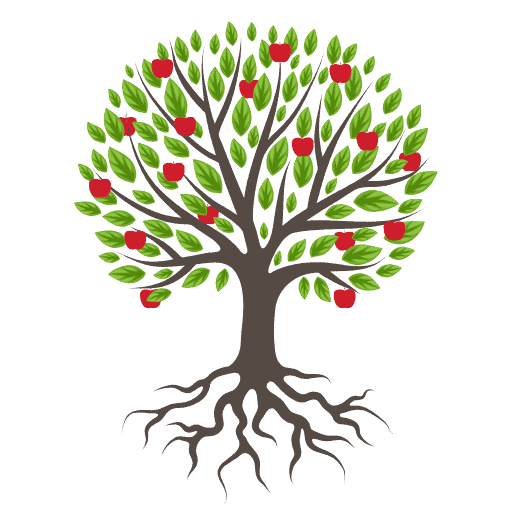
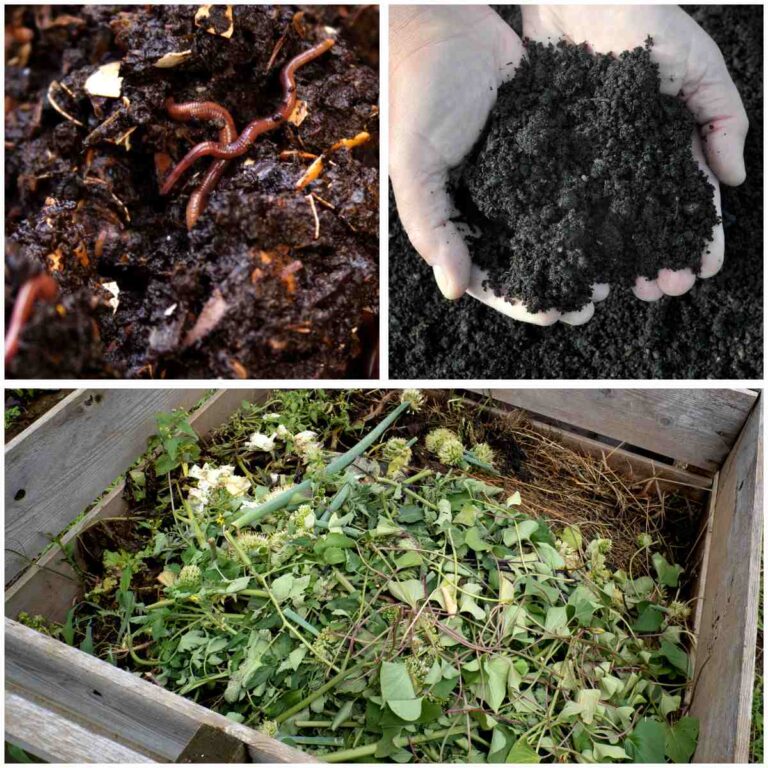
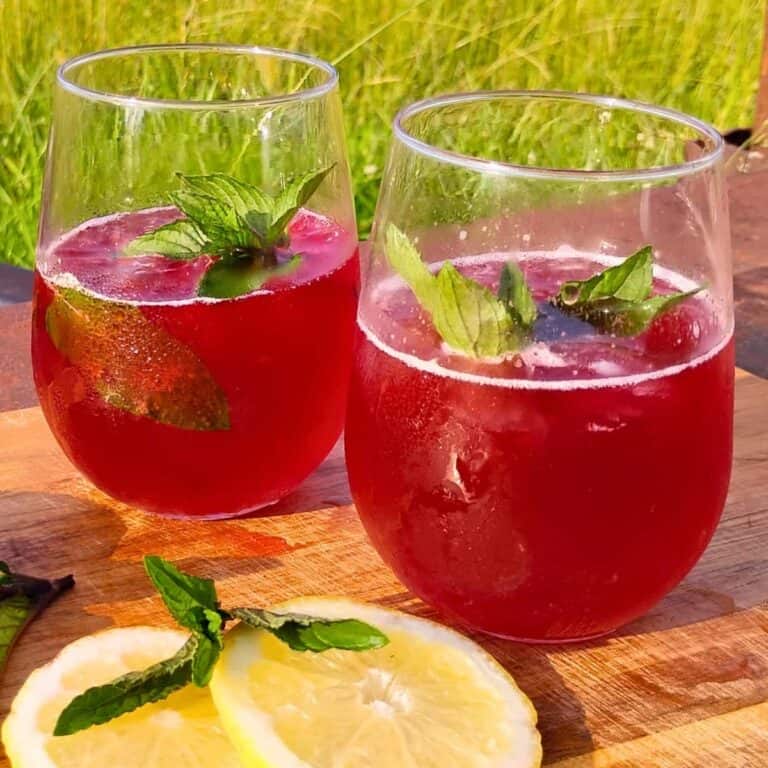
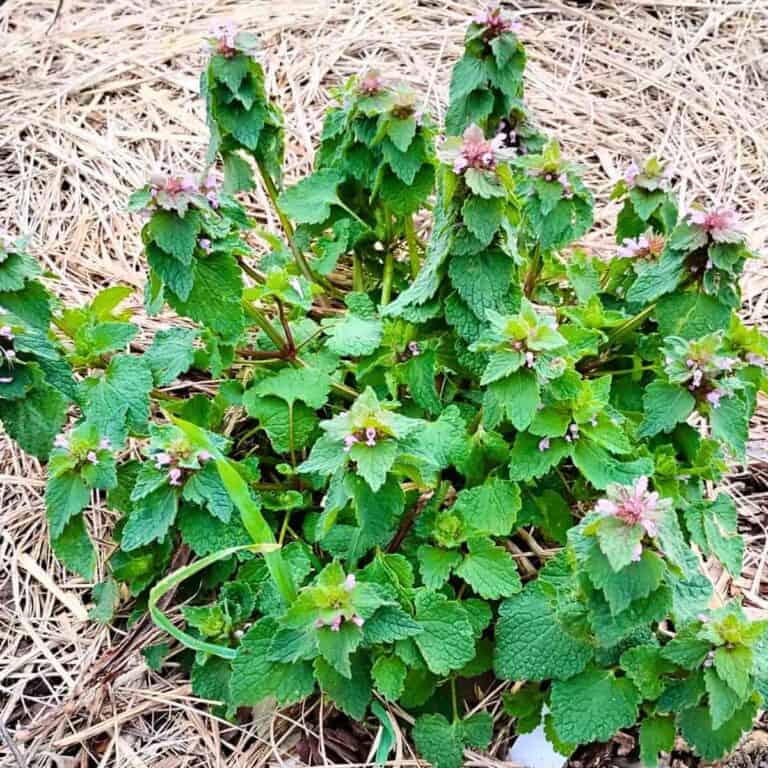
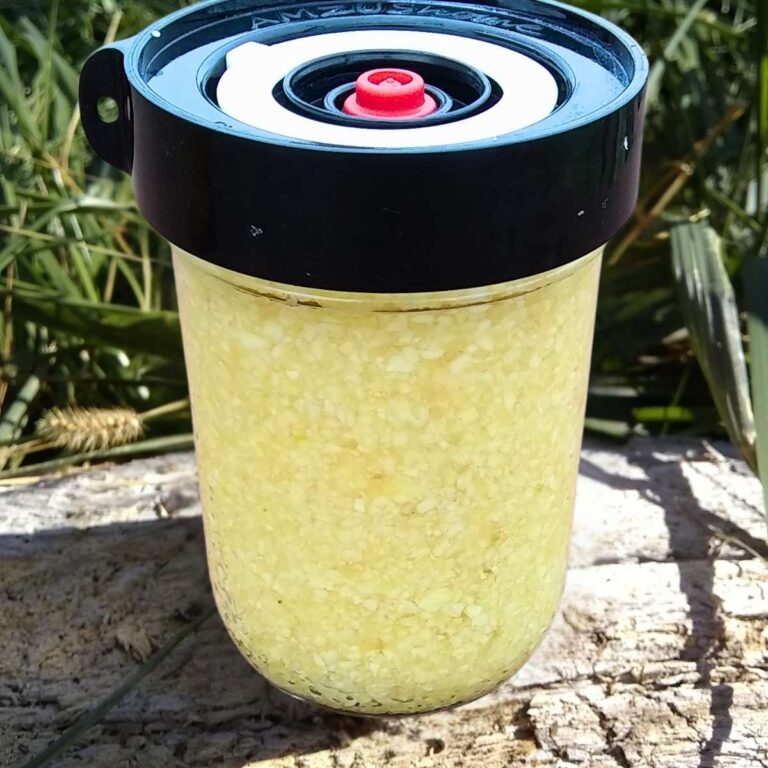
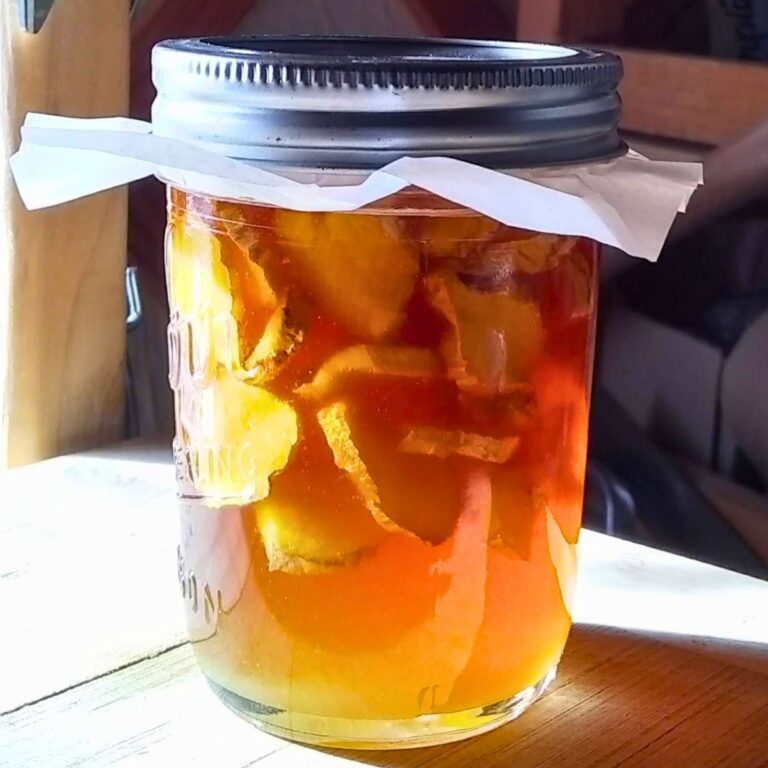
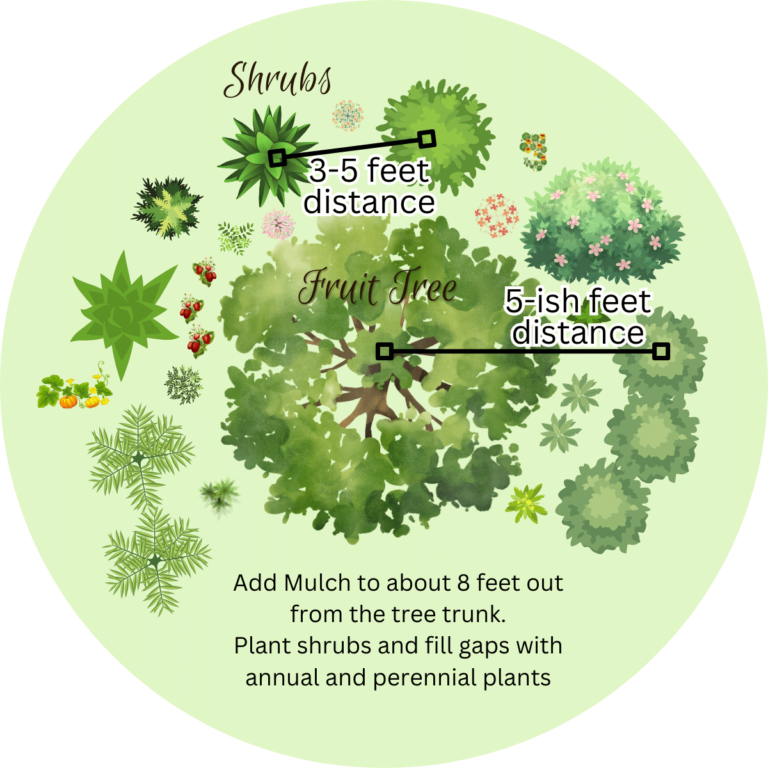
I am sure you’ll love to grow onions from seeds! And don’t forget, if you have any questions, you can ask me right here in the comments section and I’ll get back to you as fast as I can!
We’ve only ever bought sets, but I’ve wanted to start from seed the past couple of years. Didn’t start early enough this year, but I’m going to get everything in order to do so for next season. Thanks for this great information!
You’re welcome, I’m glad if you find this helpful!